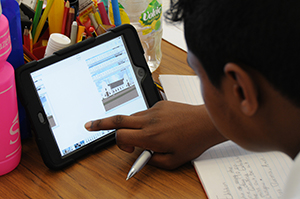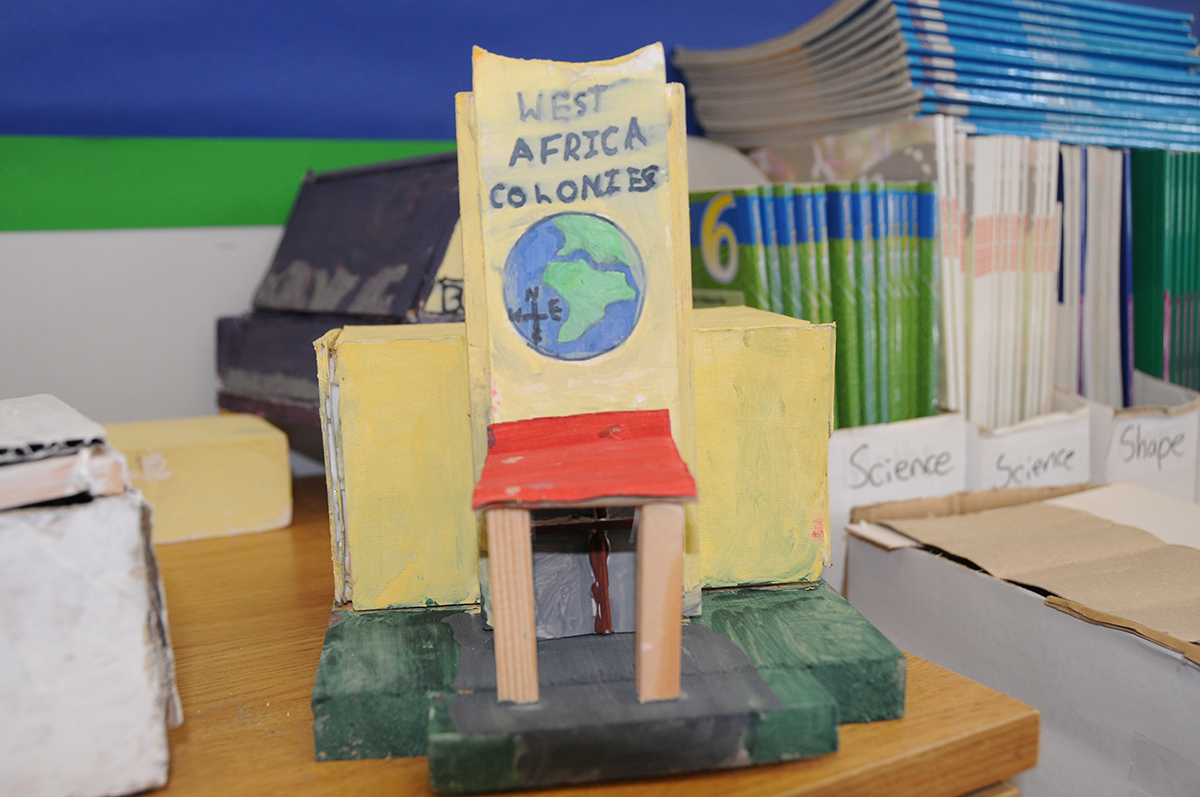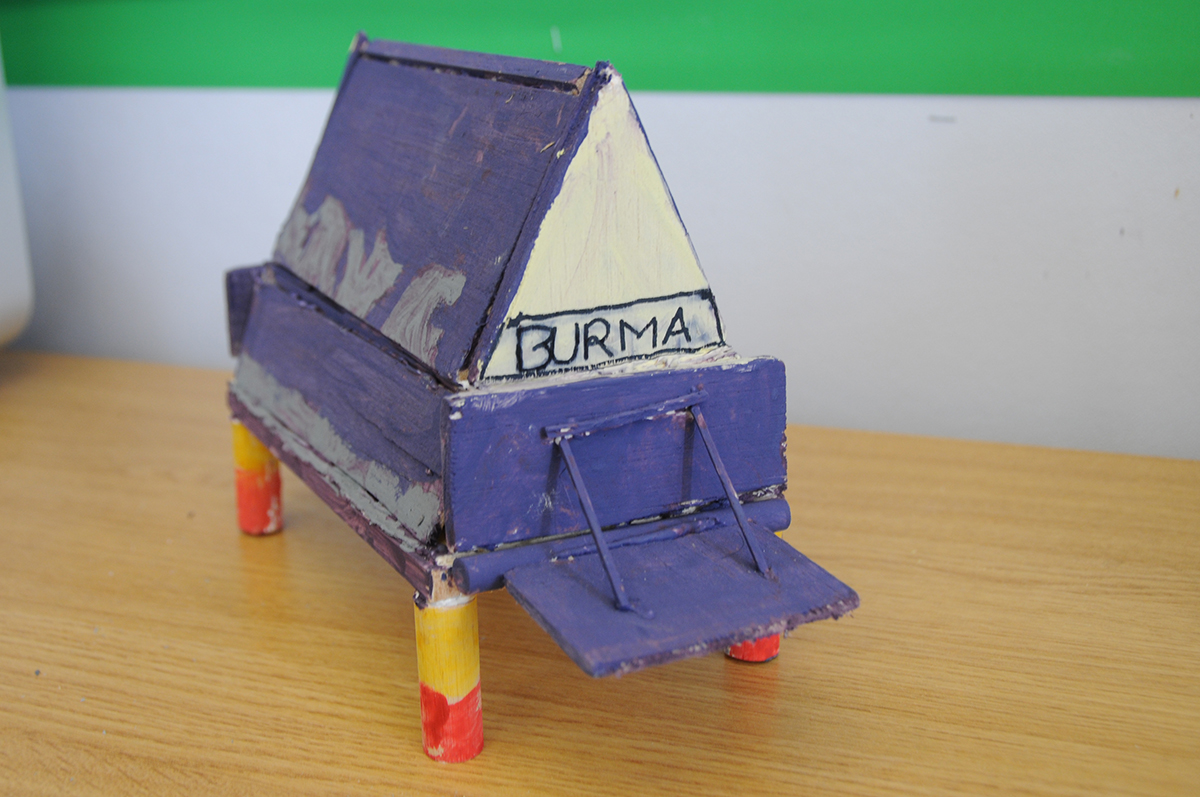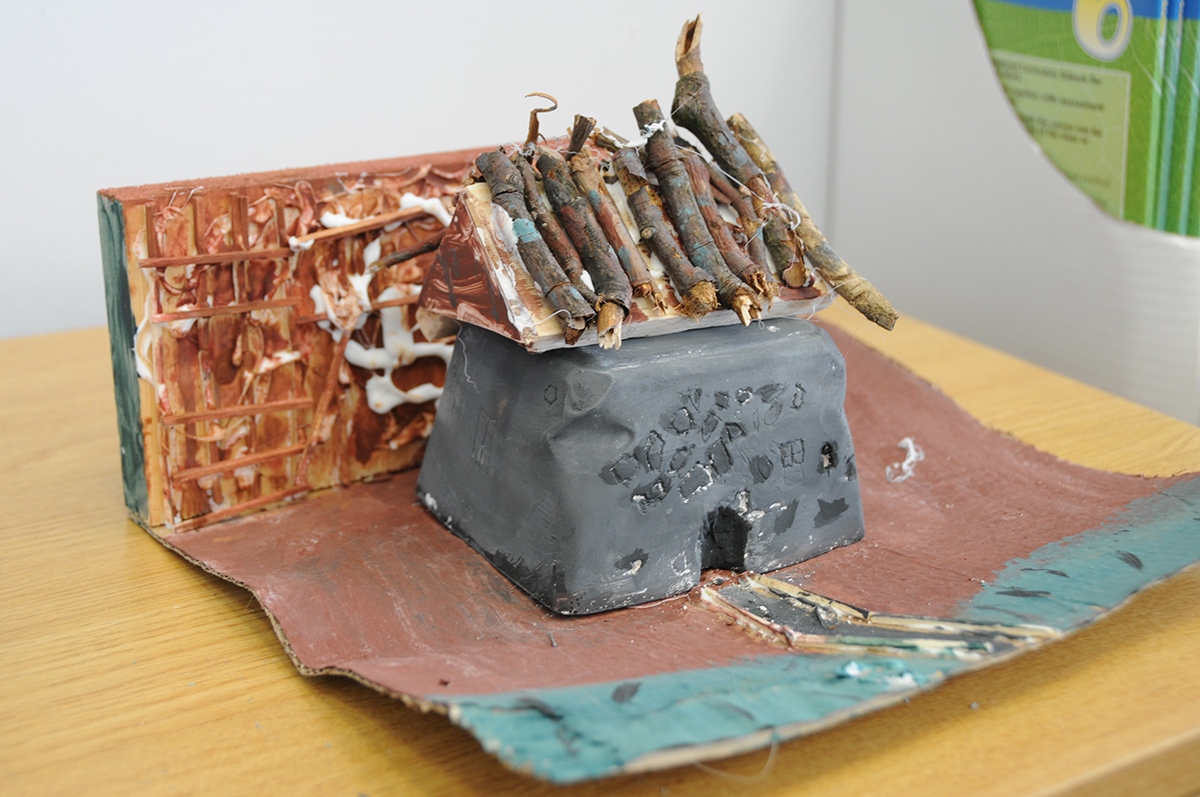Project Results
REVISIT had three main aims:
- to transform the results of The British Empire Exhibition, Glasgow 1938 into innovative learning tools which are specifically targeted to school-age learners in terms of both age and curriculum;
- to make these learning tools as widely accessible as possible;
- and to increase our understanding of the impact of immersive learning tools for teachers and learners through a pilot study.
The following summary findings deal with the third aim, to use observational and evaluation data to increase our understanding of how 3D models can be used in school teaching and learning, and assess the impact and potential of this innovation.
Summary Findings
Teaching
- Teacher buy in is critically important.
- The best results are where the teacher is enthusiastic about the learning opportunities provided by the 3D model and associated data and spends time familiarising themselves with both and preparing lesson plans specific to the content and tools provided. The success of this approach is inter-related with the enthusiasm of the teacher and his/her ability to ‘sell’ it to the students.
- The project noted the (often very significant) time pressure on teachers as a barrier to successful use of the learning opportunities.
- Teachers identified the benefit of 3D models to provide cross-curricular activities and learning opportunities.
- A 3D digital model on a particular subject can be successfully used to create an overarching theme that links to many different parts of the curriculum. It can provide a “good hook into a topic”.
- However, familiarity with the digital model and resources is important to make the cross-curricular links meaningful.
- 3D digital models can add a “wow factor” to learning activities. Teachers noted the value of a different mode of learning, in particular:
- Learning in a different way (breaking away from “studying in a particular aspect”/”thinking outside the box [of the way subjects are usually taught]”;
- Encouraging independent learning and teamwork;
- The opportunity to co-curate work within a 3D model as a particular strength.
- 3D content alone (wow factor) is not enough to drive this approach forward, the teacher also need to ‘spin’ the topic to the class.
- Lack of preparation within schools can lead to missed opportunities using the 3D model and supporting materials and a lack of clarity about what the overall aim of the activities might be. Conversely, strong preparation (including links to learning objectives) can lead to a highly successful theme that runs for as long as the teacher wants it to.
- Teachers noted that innovation comes with risk attached.
Learning
- In order to engage learners, strong signposting of the relevance of content to their learning pathways is crucial. This is especially important to consider when repurposing research data for a teaching and learning objective.
- It appears to be harder to engage students and teachers when the topic is not immediately relevant. (“if it was a 3D model of Hull then obviously it would tie in beautifully”...)
- Some teachers also noted that their students are very exam-focussed/results-driven, and as such sometimes could not see the value of activities that did not feed directly into their assessments.
- Survey, observational, and qualitative data indicates that engaging with 3D models appears to make learning more interactive (strong), more fun (slight), and more collaborative (strong, with most students identifying teamwork/collaboration as the most enjoyable factor). It did not appear to increase motivation for learning (cf. point1 above).
- Freedom of exploration leads to engagement and can inspire the imagination in terms of both distant time and distant place. One teacher described the children’s exploration of the 3D scene as “Almost being naughty but in a constructive way.” (e.g. deliberately falling off buildings or discovering a playground and ‘sliding’ down the slides).
- Several teachers noted the effect of this type of learning on maturity/emotional intelligence/artistic/cultural intelligence.
- Students appeared to particularly enjoy creating their own materials (sometimes directly connected to the 3D model and topic, sometimes very tenuously linked).
- Many students commented on the ability to create their own tours (interaction and creation) as crucial to their enjoyment of the activities.
- It is important to acknowledge the important of learners as producers as well as consumers of both physical and digital educational and creative materials.
- Using the 3D model involved collaborative and social learning, in both a technical sense (e.g. students helping each other with navigation through the model) (all schools) and in terms of the subject (e.g. sharing interesting discoveries). Students with strong ICT skills emerged as ‘champions’ who lead and helped classmates.
- Some highly engaged students ask where they can download/access 3D models and related learning materials for use outside the classroom.
- 3D models offer an increased power to see and understand non-extant sites compared to books and pictures. However it was the combination of the digital ‘game like’ environment with the real photographs and videos of the actual exhibition that “made it real”.
Technical
- Aesthetic quality is important. This is a challenge when attempting to deliver 3D models that are navigable in real time but have small enough filesizes that they will run on typical school computers.
- Quality of interaction is important. If software is laggy, or too sensitive, this negatively affects student engagement with the content.
- Software crashing and losing work is particularly disheartening and frustrating for learners.
- Users do not typically disentangle the content (the 3D model) from the delivery software (in our case, VSim).
- It is a mistake to assume that school-age learners have strong desktop computer skills, especially regarding keyboard/mouse and using desktop file systems. Smartphones and tablets appear to be a much more common way of interacting with digital content.
- Students tend to use different technologies within and outside school (with desktops being much more common in schools and mobile computing being much less common).
- Making models and materials available on the technologies the students are already using was noted as very important for removing barriers to engagement. For example, in two of the schools the classrooms were equipped with iPads that the students were accustomed to using for concurrent research (independently and collaboratively).
- Students appear to quickly learn the navigation and other controls of the software and often overtake their teachers in terms of technical proficiency (particularly when already familiar with wasd navigation from other contexts). This can cause frustration when the teacher does not know the answer but also provides opportunities for independent learning and leadership (see above).
- Some students found positioning themselves within the model difficult (i.e. they got ‘lost’ even when referring to a 2D archive map).
- Ease of navigation applies to any complementary information as well as the 3D model (in our case, the folders of archival material). Having a properly structured archive (as opposed to sometimes poorly named collections of files) makes a big difference to student engagement. (In our case the students often just googled for images instead of searching the folders).
- Students noted several aspects that would have made the 3D environment (both model and delivery software interpreted as a single product) more engaging including: interaction with elements; “going inside the buildings”; it being populated; sound effects; an interactive map of the scene; and the ability to have a digital ‘presence’ in the environment so you could see where other learners were.
Logistical/organisational
- Most school labs do not have computers that are adequate to run a large 3D model in real time, this created a number of technical issues that were damaging to the learning potential of the 3D model.
- A technical policy which does not allow the installation of software on school computers is a monumental barrier to digital learning. This was the case in one of the case study schools and significantly impacted the amount and depth of students’ interaction.
- Many teachers may also need technical support setting up new software and becoming familiar with it. This could be as informal as liaising with the school technician or as formal as undertaking CPD in relevant areas.
- Both individual and institutional time are critical factors. There is some indication that primary schools can be more flexible than secondary schools in this.
- Time constraints on teachers are a major inhibitor.
- The flexibility of the curriculum is also a crucial factor in the success of ‘theme-based’ approaches, particularly in terms of fitting around other curricular activities and assessment regimes.
- The time of year plays a part, e.g. teachers noted that it would have been easier to implement the innovation in September rather than at ‘exam time’.
- Institutional support (e.g. from a headteacher) is vital for success. However this is no substitute for the teachers being directly motivated to use the learning tools.

Child navigating the 3D model

Artwork exploring abstract concepts from the Empire Exhibition, 1938

Child interacting with 3D model of the Empire Exhibition, 2016

Children conducting an experiment with coal

A primary school teacher leading a class in interpreting the 3D model and associated materials

Physical model of a pavilion from the 3D scene

Example of REVISIT-inspired cross-curricular activity

Primary school children, about to discover a playground within the 3D scene

Physical model of a pavilion from the 3D scene

Physical model of a pavilion from the 3D scene